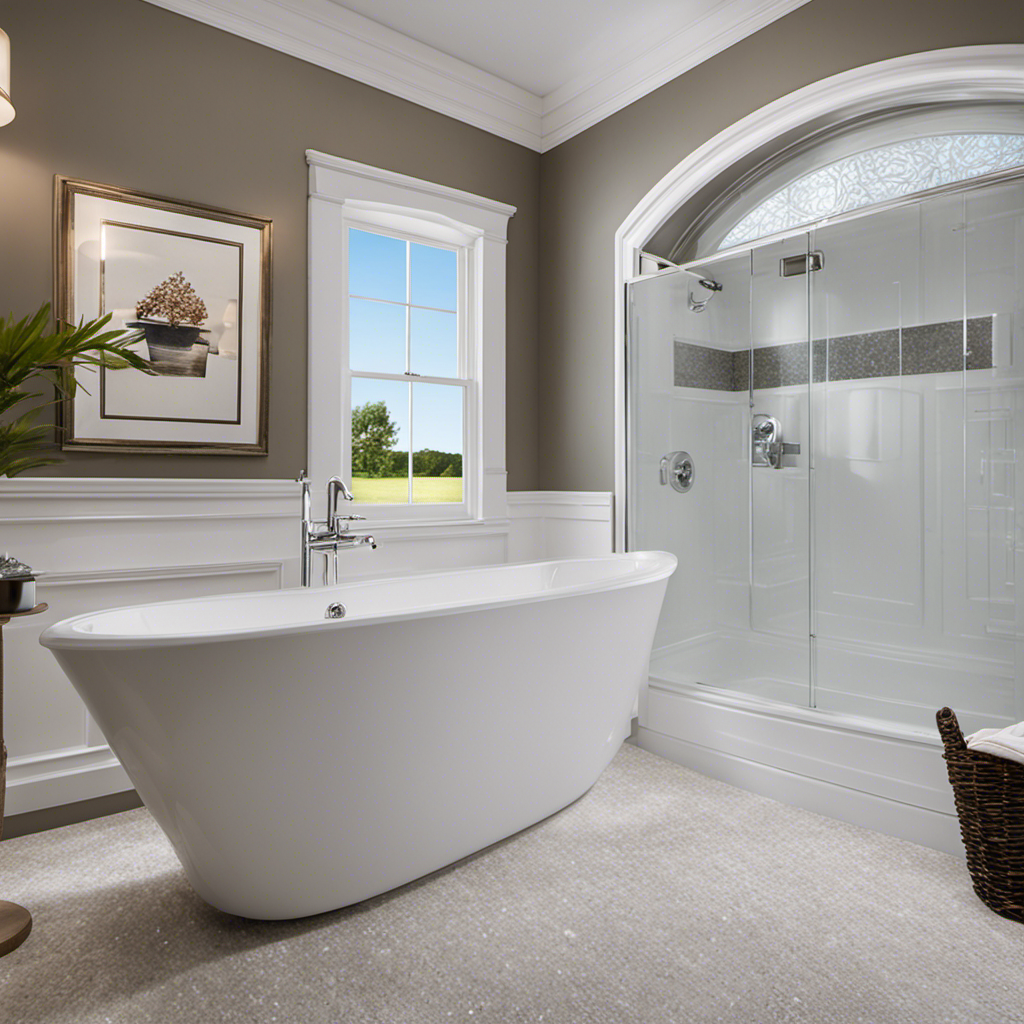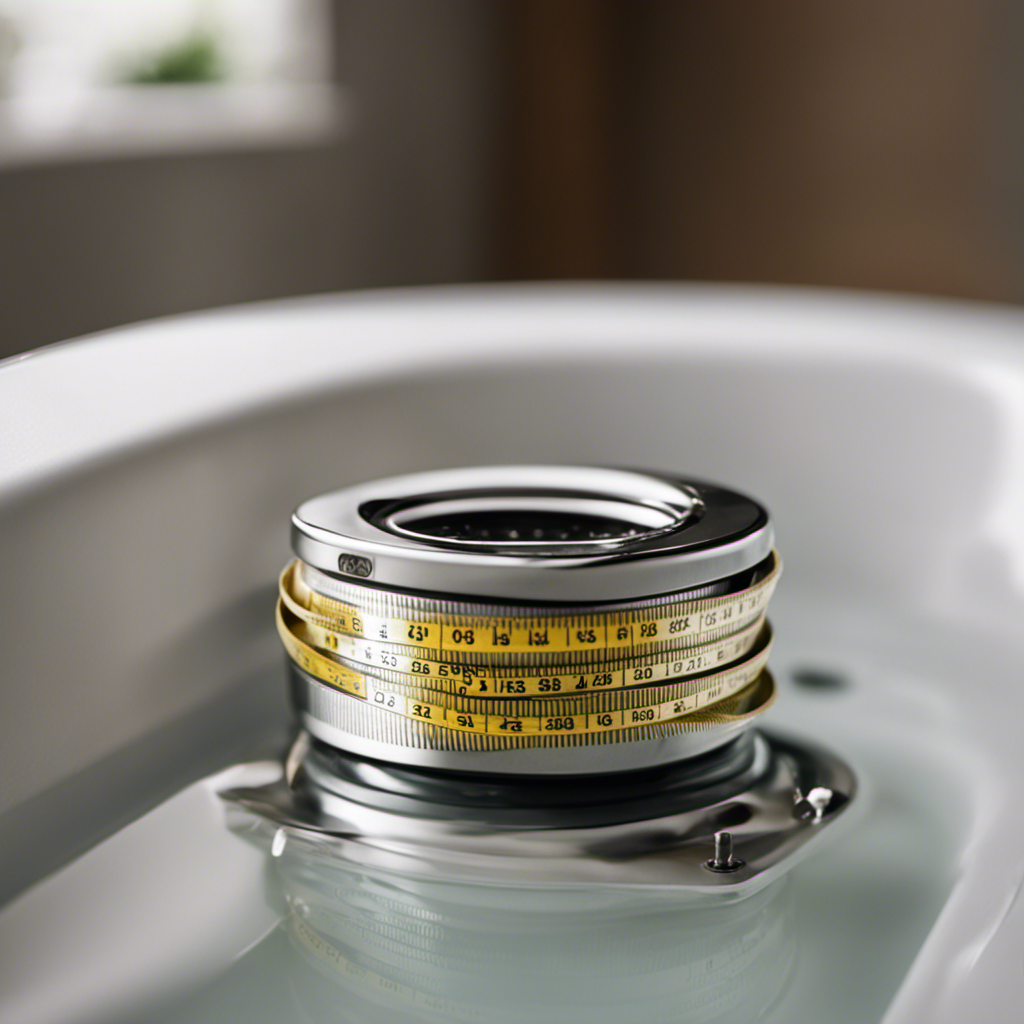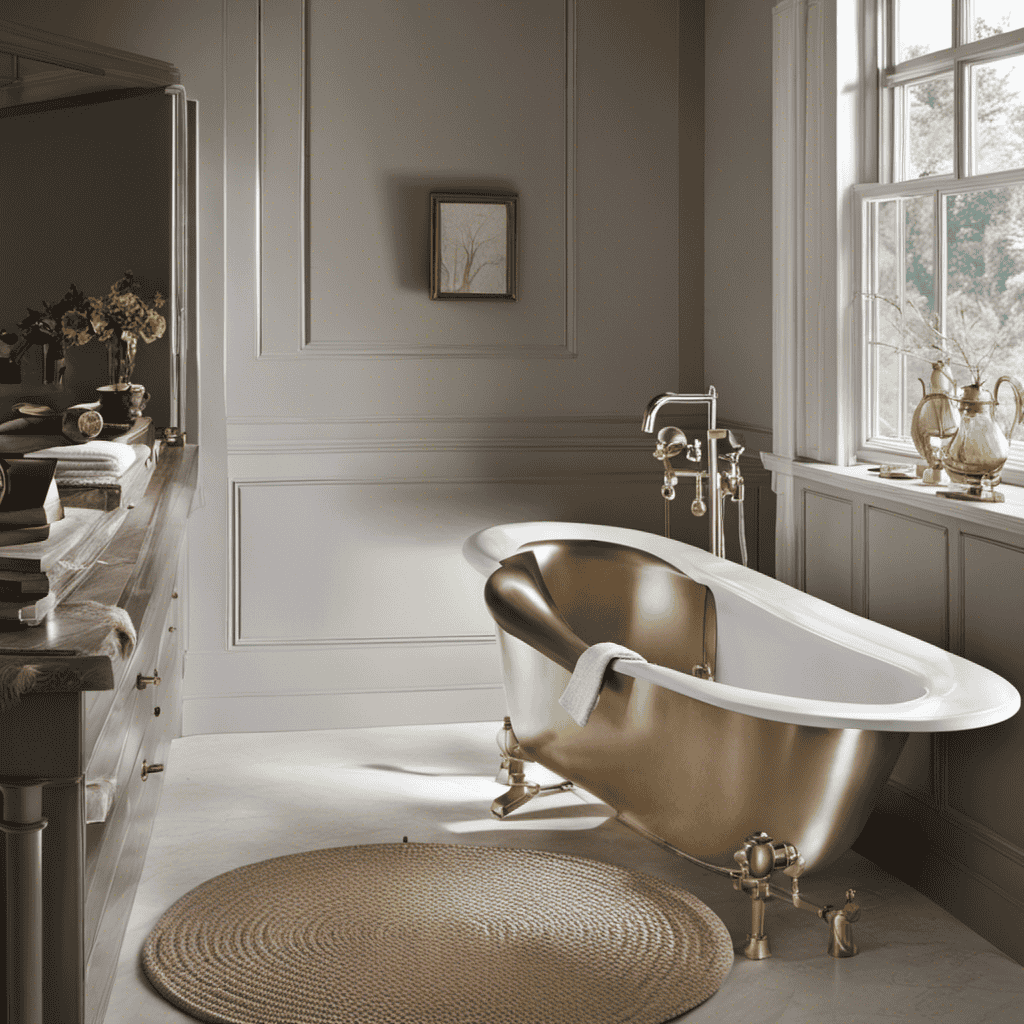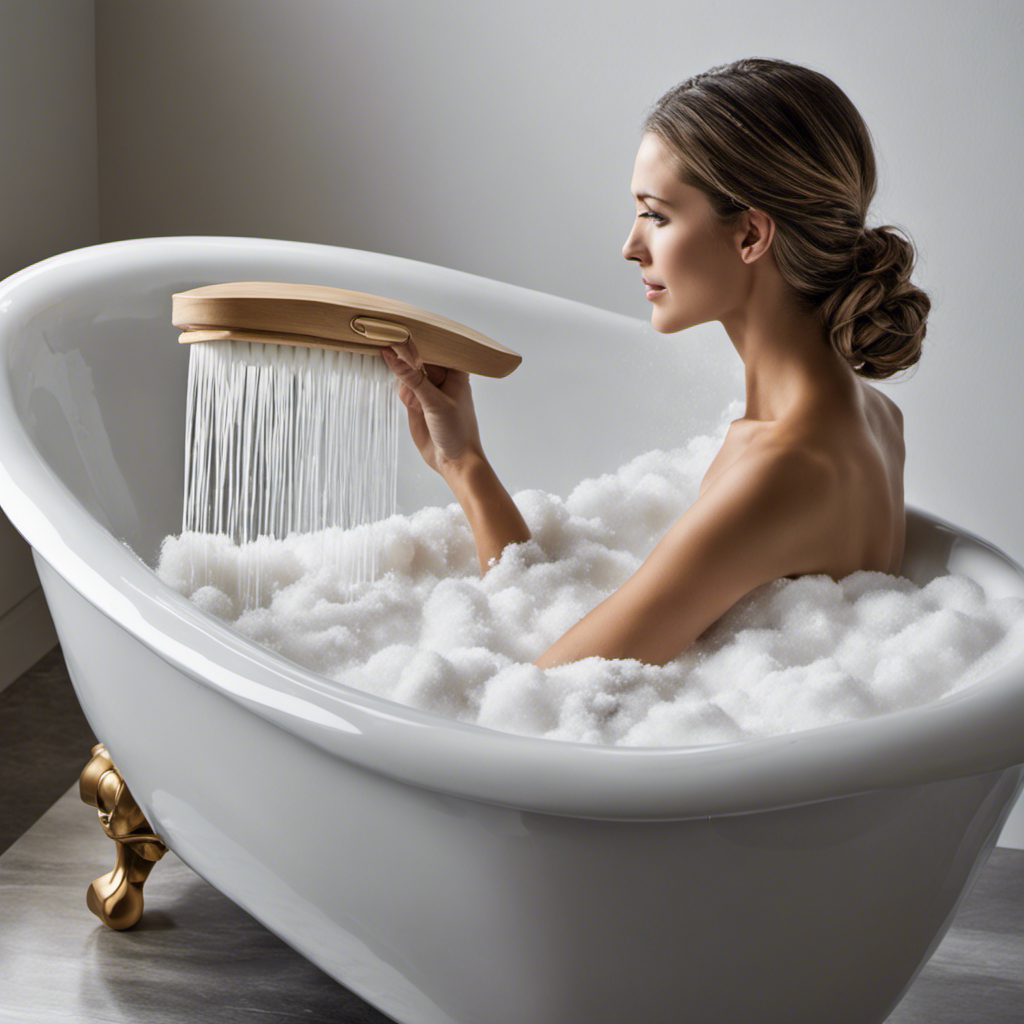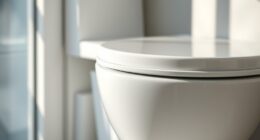What’s the secret to a perfectly sealed bathtub? Well, let me tell you – it all starts with choosing the right caulking.
You might be wondering, ‘What is the best caulking to use around a bathtub?’ Lucky for you, I’ve done the research and I’m here to share my expertise.
In this article, I’ll delve into the different types of caulking, factors to consider when choosing one, and the best brands out there.
Get ready to learn how to properly apply and maintain caulking for a watertight bathtub.
Key Takeaways
- Silicone caulk is the best caulking for a bathtub due to its durability and water resistance.
- Consider factors such as bathtub material, color and finish of the caulk, and its resistance to mold and mildew.
- Popular brands for bathtub caulking include DAP, GE Silicone, and Loctite.
- Proper application and maintenance of caulking are important for a proper seal and adhesion.
Types of Caulking for Bathtub
To ensure a water-tight seal around your bathtub, you should consider using silicone caulk. Silicone caulk is the best caulking for tile surround due to its durability and water resistance. It is available in various colors, allowing you to choose the one that best matches your bathroom decor.
Popular caulking color options include white, clear, and almond. White is a classic choice that blends well with most tile colors, while clear caulk provides a seamless look. Almond caulk is ideal for warmer-toned tiles.
When selecting the best caulking for your tile surround, opt for a high-quality silicone caulk that is specifically designed for bathroom use. This will ensure a long-lasting, water-resistant seal that effectively prevents leaks and protects your bathroom from water damage.
Factors to Consider When Choosing Caulking
When choosing caulk for your bathtub, you should consider several factors. Firstly, it is important to choose a caulk that is specifically designed for use in wet areas, such as bathrooms, to ensure durability and resistance to mold and mildew. Secondly, the type of bathtub material will also influence your choice of caulk. For example, acrylic or fiberglass tubs require a flexible caulk that can accommodate movement without cracking. Finally, consider the color and finish of the caulk to ensure it complements the overall aesthetic of your bathroom. By carefully considering these factors, you can select the best caulk for your bathtub that will provide a long-lasting seal and maintain the beauty of your bathroom.
| Factors to Consider When Choosing Caulking | ||
|---|---|---|
| Durability | Flexibility | Aesthetic Appeal |
| Resistance to Mold | Compatibility | Ease of Application |
Best Caulking Brands for Bathtub
One of the top brands for bathtub caulking is known for its durability and resistance to mold and mildew.
When it comes to choosing the best caulking for your bathtub, it’s important to consider the materials used and their performance. There are several popular brands that offer high-quality caulking options specifically designed for bathtubs. Some of these brands include DAP, GE Silicone, and Loctite.
These caulks are known for their excellent adhesion, flexibility, and long-lasting performance. In terms of material comparison, silicone-based caulks are often preferred for their water resistance and mold resistance. They are also more durable and flexible than acrylic or latex caulks.
When it comes to removing old caulking, there are various techniques you can use, such as using a caulk removal tool or a utility knife to carefully scrape away the old caulk. It’s important to remove all the old caulking before applying a new one to ensure a proper seal and adhesion.
Steps to Properly Apply Caulking Around a Bathtub
Make sure you’re applying the caulking evenly and smoothly along the edges of the bathtub for a proper seal. When it comes to caulking your bathtub, it’s important to avoid some common mistakes that can compromise the effectiveness of the seal. Here are three things to keep in mind:
-
Use the right type of caulk: Not all caulks are suitable for bathtubs. Look for a waterproof, silicone-based caulk specifically designed for bathroom applications.
-
Prep the surface properly: Clean the area thoroughly, removing any old caulk and ensuring it’s dry before applying the new caulk.
-
Apply the caulk with precision: Use a caulk gun for controlled application and make sure to fill any gaps completely.
While caulking is a popular choice, there are also alternative sealants available such as adhesive strips and bathtub liners. These options may be worth considering depending on your specific needs.
Now that you know how to properly apply caulk, let’s explore some tips for maintaining it around your bathtub.
Tips for Maintaining Caulking Around a Bathtub
To keep the caulking in good condition, regularly inspect it for any cracks or gaps that may need to be repaired. It’s important to maintain the caulking around your bathtub to prevent water damage and mold growth.
One of the most common caulking mistakes is not properly removing old caulking before applying new. To remove old caulking properly, follow these steps:
- Use a utility knife or caulk remover tool to carefully cut or scrape away the old caulking.
- Clean the area thoroughly with a mildew remover or bleach solution to remove any mold or mildew.
- Dry the area completely before applying new caulking to ensure proper adhesion.
- Apply a new bead of silicone or acrylic caulk, making sure to fill any gaps or cracks completely.
- Smooth the caulking with your finger or a caulking tool for a professional finish.
Conclusion
In conclusion, choosing the right caulking for your bathtub is crucial for a long-lasting seal. By considering factors such as flexibility, durability, and resistance to moisture and mold, you can make an informed decision.
Brands like GE Silicone II and Dap are highly recommended for their quality and reliability. Remember to follow the proper steps for applying caulking and regularly maintain it to ensure its effectiveness.
Just like a sturdy ship sailing through rough waters, a well-sealed bathtub will protect you from leaks and provide a peaceful bathing experience.
